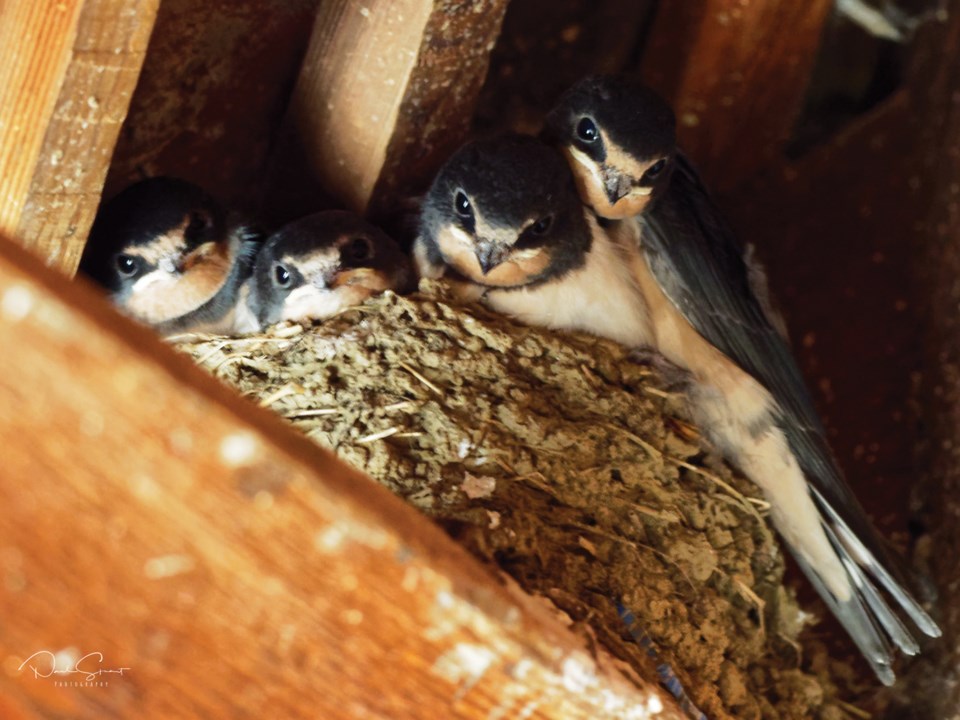In last week’s Coast Reporter, Michelle Evelyn from the Sunshine Coast Wildlife Project detailed the decline of the barn swallow in North America in recent decades, and requested information on local nesting. As Michelle states, the barn swallow was once one of the world’s most widespread and common birds. No longer, with declines in North America of 90 per cent in the last 40 years. The Sunshine Coast population probably mirrors this decline, though the species has never been really abundant here as it prefers open fields to our heavily forested environment.
Growing up in England in the 1950s, for me (and for many others) barn swallows were always part of the scenery, and I have notations in my schoolboy journals from 60 years ago: “first swallow seen today.” Playing cricket during the summer months was part of my schoolboy life, but this is a sport so boring that when I was standing around unemployed in the outfield, I could always occupy myself watching the swallows skimming around the playing field.
On the Sunshine Coast barn swallows begin to appear from their winter haunts in central and South America in the last week of April and the last ones of the year are usually seen in mid-September. All around the world barn swallows have made the transition from nesting in natural locations such as caves, to nesting on human structures, particularly under the eaves of buildings and on bridges and culverts. Also, they are frequently seen perching on utility wires. In our area, they are most likely to be observed where there are open fields or similar locations such as the airport or golf courses. They also nest and forage close to lakes and ponds. All of these locations permit the birds to forage, day-long, for the insects on which they are 100 per cent dependent.
Barn swallows have been widely studied and much is known about their lives, particularly in Europe. One interesting factoid is that tail length and degree of asymmetry in the outer tail-streamers are reliable predictors of individual quality in both males and females, and individuals use these characteristics to select mates. Tail length tends to correlate with reproductive success and other parameters of vitality.
The Sunshine Coast Wildlife Project is requesting records of barn swallow nesting, so please contact [email protected] or 604-989-1007 if you know of nesting barn swallows. To report your sightings or ask a question, contact [email protected] or 604-885-5539.



